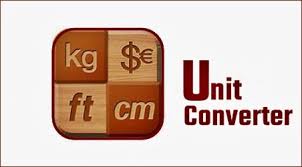Unit Converter

Unit Converter: Simplifying Measurements with Speed and Accuracy
In today’s fast-paced world, accuracy and efficiency are crucial—especially when dealing with different measurement systems. Whether you’re a student, engineer, traveler, or simply working on a home improvement project, converting between units is a task you’ve likely encountered. That’s where a unit converter becomes a powerful and indispensable tool.
What Is a Unit Converter?
A unit converter is a tool that allows users to convert a value from one measurement unit to another. These conversions can be across various categories such as length, weight, temperature, speed, volume, area, and more. By entering a value and selecting the desired units, the converter provides the equivalent value in the new unit—quickly and accurately.
Modern unit converters are available as online tools, mobile apps, and even built-in features in software like spreadsheets or calculators. These tools are designed to save time, eliminate manual errors, and provide instant results.
Why Use a Unit Converter?
- Time Efficiency Manual conversions require memorizing or looking up formulas, which can be time-consuming. A digital unit converter performs the conversion in milliseconds, allowing users to focus on the task at hand rather than calculations.
- Accuracy One small miscalculation in unit conversion can lead to major errors, especially in fields like engineering, construction, medicine, or science. Using a reliable unit converter minimizes human error and ensures precise results.
- Ease of Use Most unit converters are intuitive and user-friendly. You simply select the category, input the value, choose the source and target units, and get the result. No formulas or calculators needed.
- Versatility Many converters support a wide range of units. For example, a length converter might support meters, feet, inches, kilometers, and miles—covering both metric and imperial systems. This versatility is especially helpful for international communication and collaboration.
Common Categories of Unit Conversions Here are some of the most frequently used unit categories:
Length: Meters, feet, inches, kilometers, miles
Weight: Kilograms, pounds, grams, ounces
Temperature: Celsius, Fahrenheit, Kelvin
Volume: Liters, gallons, milliliters, cubic meters
Speed: Kilometers per hour, miles per hour, meters per second
Time: Seconds, minutes, hours, days
Area: Square meters, square feet, acres, hectares
Each category involves different formulas, and using a converter ensures that the proper calculations are always applied.
Who Can Benefit from a Unit Converter?
- Students Whether it’s math, physics, chemistry, or geography, students often need to convert measurements. A good converter helps them check their work and learn conversion logic.
- Professionals Architects, engineers, designers, scientists, and medical professionals frequently work across different unit systems. For them, a converter is more than a convenience—it’s essential.
- Travelers and Shoppers When traveling abroad, you may encounter unfamiliar units—like kilometers instead of miles or Celsius instead of Fahrenheit. A converter helps you make sense of distances, temperatures, or even shopping weights.
- Home users DIY projects, cooking, gardening, or fitness tracking—all can involve measurements. A converter helps ensure you get the right amounts every time.
Online vs. Offline Tools While many users rely on online unit converters, there are also offline apps and even physical conversion charts. However, web-based tools have the advantage of regular updates, better interfaces, and wider unit support.
Modern web-based tools built using HTML, CSS, and JavaScript are often responsive, mobile-friendly, and don’t require installation. These tools are becoming increasingly popular for their convenience and accessibility.
Final Thoughts The importance of a unit converter in everyday life cannot be overstated. It’s a tool that bridges gaps between measurement systems and ensures you stay accurate and efficient, whether you’re working on a complex project or a simple task. With the rise of web-based and mobile tools, unit conversion is now just a few clicks away.
If you haven’t used a digital unit converter yet, it’s time to explore one—you’ll wonder how you ever managed without it!